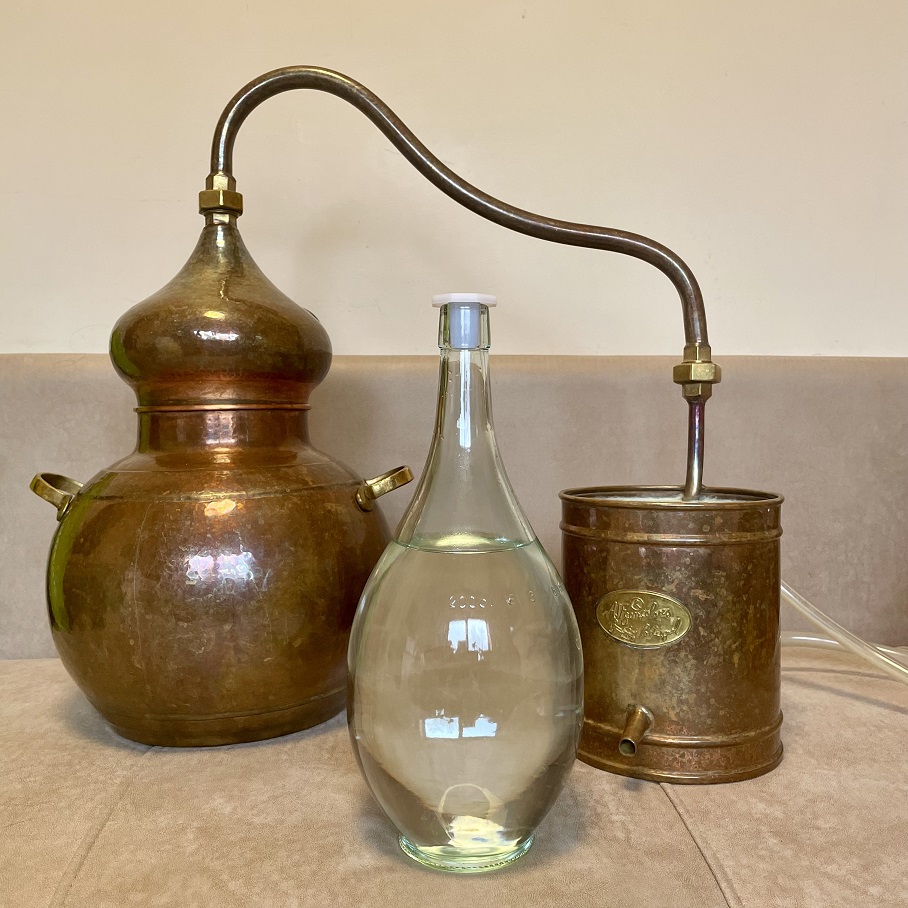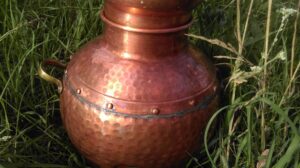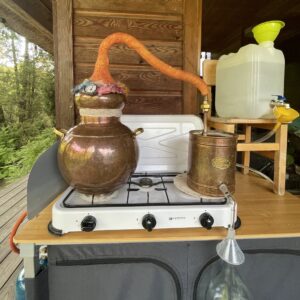How Do We Call It: Hydrolate, Hydrosol and Aromatic Water Explained
Aromatic waters that are obtained by the distillation of raw plant material are gaining more and more appreciation in the fields of aromatherapy and cosmetics
The most popular words to name that distillate are hydrosol and hydrolate, closely followed by aromatic water. But we might also find the terms floral water, “plant name“ distillate, “plant name” water and even various combinations of theses. Probably the most comic one I came across was “Rosemary rose water” explaining what product will be obtained by the distillation of rosemary.
Having so many names creates a lot of confusion for consumers, sellers, therapists, researchers and even producers.
After reading this blog post you’ll know more about the origins of these terms, their usage by industry and geographically, and will gain confidence in how to actually call it.
Hydrolate
This term is mostly used in Europe. But it is also listed by the International Organization for Standardization (ISO) in the document that specifies the terms and definitions of aromatic natural raw materials ISO 9235:2021.
The standard states: “Aromatic water, hydrolate: aqueous distillate which remains after steam distillation and separation of the essential oil whenever possible. Example: Lavender hydrolate (water), orange blossom water.” Term distillate is described as the “product of condensation obtained after distillation of a natural raw material”.
As we can see, ISO recognizes two terms to be used interchangeably: hydrolate and aromatic water. It does not list hydrosol.
 It is believed that the word hydrolate combines the international term hydro for water and French lait – milk or laiteux -milky. This might be because quite often the distillate looks milky, especially during the first half of distillation.
It is believed that the word hydrolate combines the international term hydro for water and French lait – milk or laiteux -milky. This might be because quite often the distillate looks milky, especially during the first half of distillation.
Less known but very exciting theory suggests, that this term was first mentioned by a French pharmacist A.Chereau in 1825, explaining that “hydroolats are therapeutic waters, obtained by distillation”. I found this in the book by Ann Harman “Harvest to Hydrosol”, which I highly recommend for everybody interested in aromatic distillation.
Regardless of the origin, hydrolate is a unique word and is only used in the field of aromatherapy. Therefore it cannot be confused with another product. This is the most important advantage of this particular term compared to all the others.
Aromatic Water
The term aromatic water, even though listed and defined by ISO, often is misused in the cosmetics industry to describe any scented water. It may be water mixed with essential oil using an emulsifier, alcohol or other solubilizer. It may even have a synthetic scent added.
Remember, if it is not distilled – it is not hydrolate.
Hydrosol
If you search online for the meaning of the term hydrosol, you will get two definitions of the word that are unrelated to each other. It’s because two different fields gave the same name for two different things.
Firstly hydrosol is a chemistry term and we need to understand its meaning.
Dictionary.com describes hydrosol as a noun in Physical Chemistry meaning „a colloidal suspension in water“. It states this term was first recorded in 1860s.
Wikipedia explains the etymology of the word: hydro– + sol where hydro is water, liquid or hydrogen (in chemistry); a sol is a colloidal suspension made out of solid particles in a continuous liquid medium.
Examples of hydrosol include pigmented ink, paint, and mud.
The second explanation we may find comes from aromatherapy: hydrosol is an aqueous product of the hydrodistillation of plant material.
In the aromatherapy industry, the term hydrosol was introduced by Jeanne Rose (USA) in 1989. She has put a lot of effort into spreading the knowledge on how to distill and use the aqueous part of plant distillate which didn’t have a name back then. So she coined the word herself. Interestingly enough it was also hydro for water and sol for solution. She found out about the existence of the same term in the chemistry field, yet she felt it was a good word to use in the aromatherapy field too. Indeed, the word hydrosol was well received by her colleagues and students and became a primary term for distilled aromatic waters in the USA.
The problem is, the product that is called hydrosol in aromatherapy is not technically hydrosol in terms of chemistry. Aromatic distillate has organic plant volatile compounds in their liquid form dispersed in water. Hydrosol (chem.) refers to the substance that has solid particles dispersed in water or other liquid.
I assume it’s due to this inadequacy ISO does not recognize the usage of the word hydrosol in terms of aromatic materials.
INCI Names
INCI names (International Nomenclature Cosmetic Ingredient) are systematic names internationally recognized to identify cosmetic ingredients and household products. All the ingredients must be listed on the product label and this nomenclature ensures universal ingredient identification.
INCI has its own version of how to name aromatic distillate. According to this nomenclature, hydrolates are listed as “Plant name + water”. It may or may not include one of these: Latin and common names of the plant and the plant part from which the hydrolate is obtained.
So we might find both “Tea tree water” and “Melaleuca alternifolia Leaf water” in the INCI part of the label describing the same thing – tea tree hydrolate.
Short Practical Tips When Buying Hydrolates
First of all, the product description should specifically indicate that it was made by distilling a raw plant. Ask the seller if you do not find this information.
There should be a common, Latin name of the plant, and plant part (leaves, flowering tops, roots, etc.) that was distilled on the label.
The INCI section should be “plant name + water” and nothing else. If you find an emulsifier, solubilizer, alcohol, essential oil, or anything else – it is not hydrosol or it is pure hydrosol.
Conclusion
Hydrolate together with aromatic water are two recognized terms by the International Organization for Standardization (ISO) to be used when talking about aromatic raw materials. ISO does not list hydrosol.
Hydrolate is a unique word and is only used in the field of aromatherapy. Therefore it cannot be confused with any other product. I find it its most important advantage compared to all the other terms.
Term aromatic water sometimes is used in the cosmetics industry to describe any water that has an added scent. It may even be a synthetic scent and not a product of distillation.
Term hydrosol has been used in the chemistry field for more than 100 years before it came into the aromatherapy industry. Those two different fields gave the same name for two different things.
I assume this inadequacy may be one of the reasons why ISO does not recognize the usage of the word hydrosol in terms of aromatic substances.
My choice is to mainly use the word hydrolate. I may also use hydrosol from time to time so people who are more familiar with this term would understand me too. Term aromatic water may by a good synonym to use while writing a text on hydrolats but may mean different things when found on the product label.
I would love to see the aromatherapy and the cosmetics industry always using the term hydrolate to avoid confusion when talking about aromatic waters obtained by the distillation of raw plant material.
Literature and Sources
A.Harman. Harvest to Hydrosol, 2d edition. 2023.
J.Rose. Hydrosols and Aromatic Water. A collection of data 1990-2015.
https://www.iso.org/obp/ui/en/#iso:std:iso:9235:ed-3:v1:en
https://www.dictionary.com/browse/hydrosol
https://en.wiktionary.org/wiki/hydrosol
https://en.wikipedia.org/wiki/Herbal_distillate





